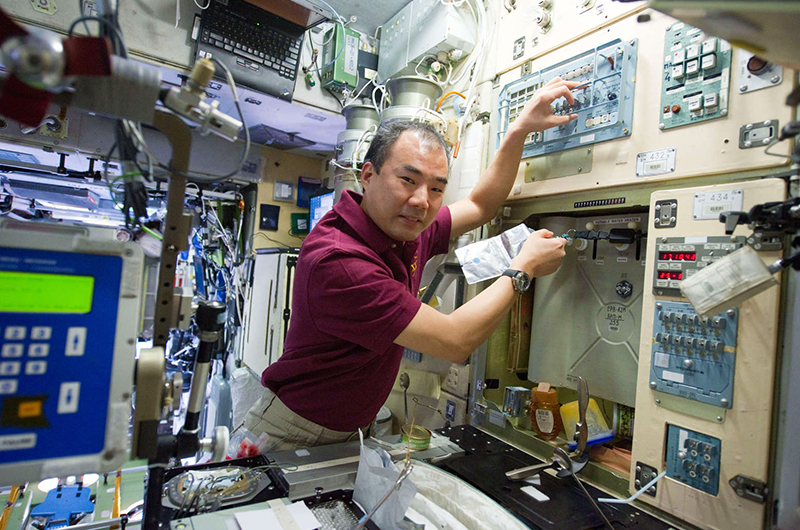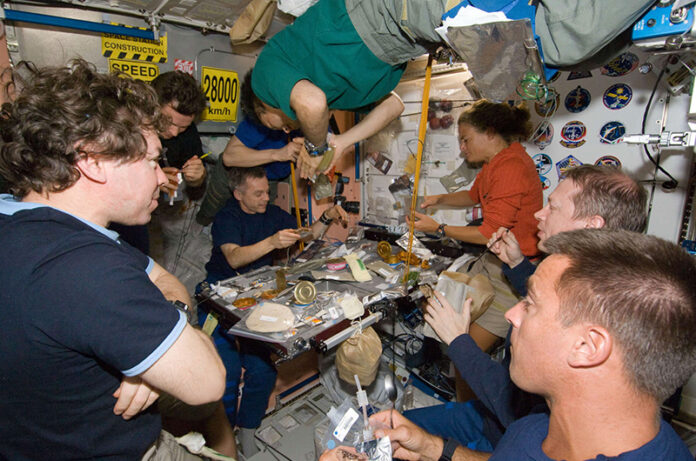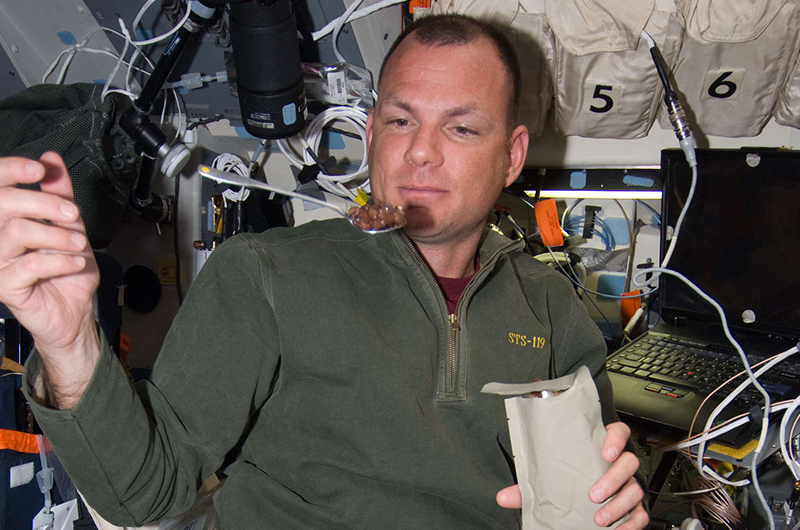We’ve all pondered what it might be like to consume food while floating through space, but the only thing that’s ever come close to simulating the experience is eating melted Dippin’ Dots. Because of this, we asked NASA astronaut Tom Marshburn, a person who is truly knowledgeable about this subject matter, to explain how eating works when there is no gravity.
Marshburn has logged a significant amount of time in space and even served a five-month mission aboard the International Space Station (alongside Chris Hadfield, who is known for his impersonation of David Bowie). As a result, he has consumed food and drinks that have been pulverized into powders, exposed to radiation, or simply left for an entire year without being consumed.
He was gracious enough to take some time out of his lunch break on Earth in order to explain all of the more nuanced aspects of dining in space. We’ve highlighted the most important aspects, and we’ve included some supplementary information from the NASA website below. Consuming an excessive amount of Capri Sun is an excellent place to start, even if you won’t truly understand what it’s like to eat until you’ve experienced weightlessness for yourself.
1. You Can Bring You Own Food
NASA provides its astronauts with all of the food they require, but also gives them the option to bring their own supplies so they may break up the monotony of the menu, which rotates through the same items on a regular basis. “Whatever you plan to bring into the facility must first receive approval from the food lab.
No glass containers or anything else that is considered to be in particularly poor condition are permitted to be taken up “According to Marshburn. “In addition, I am positive that there are other limitations that I am not aware of. However, we were only given roughly nine containers during our stay of five months.” Pick your snacks with some discernment.
2. Sometimes Food Is Exposed To Radiation
Before the launch, several of the dishes that are sent into space with the crew are subjected to radiation (also known as irradiation). Unlike the majority of origin stories for superheroes, this is not an accident.
“The product must have an extremely lengthy shelf life. Years,” Marshburn says. “What a lot of people don’t realize is that when they create something and send it up to us in space, it has to be not only processed but also packaged, and then sent up from Houston to wherever in the world the rocket is waiting for it. This is something that a lot of people don’t realize. That can take a few months. After that, you will go through the processing with that car, and then you will wait to be put aboard. In addition to that, they are required to have a stockpile of food in the event that one of these trucks is involved in an accident. Therefore, there is food that has been there for an entire year before we even get around to eating it.”
3. A Big Part Of The Food Is Rehydratable
The “rehydratable” section of the astronaut’s menu is perhaps the one that is most recognizable to you. This word refers to anything that has had the water extracted from it in order to reduce its overall weight. It doesn’t matter what it is, from mac and cheese to apple cider, you have to hook it up to the water dispenser onboard no matter what.
The “membrane” that covers the food in the pouches is quite similar to the one that can be found in Capri Sun fruit punch containers. Sun, and once you’ve hooked it up to the needle on the dispenser, you need to choose your volume and temperature. Then a stream of water erupts, and all of a sudden the powdery mac appears to be appealing to the taste buds.

4. They Let Their Meal Float
They didn’t merely manufacture these photographs for the media; astronauts are quite content to let their food travel around the room while they eat. According to what Marshburn explains, “When it comes to space travel, one of the funniest ways to differentiate newbies from seasoned veterans is to watch how they handle their meals.
They finish their meal while acting leisurely and calmly about it, and then they reach up with their spoon just as the food is going to strike the wall, stick it on the spoon, and eat it again. The veteran simply responds, “That’s intriguing,” after which they finish their bite.” The only time it becomes an issue is when they get back to their house and have to make a conscious effort to avoid dropping dishes out of instinct.
5. Liquid Salt And Pepper
Due to the tight prohibition on sprinkling of any type, NASA is unable to transport traditional salt and pepper shakers with its crews. (The salt and pepper would float away and maybe go into the eyes of those who consumed it.) Therefore, rather than that, the crew will be receiving these bottles of liquid seasoning. The pepper is dispersed throughout the oil, but the salt is thoroughly mixed throughout the water.








